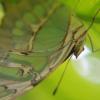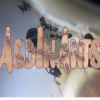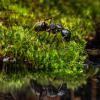As Trager stated yearling colonies are fairly easy to come by in a variety of dead plant material. In Florida I’ve had good luck finding them in dead hollowed out portions of beauty berry and smilax.
They’re regular visitors to lights at night, though the queens often hold on to their wings for quite awhile and will fly despite being mated. Only one in several queens may adapt to a regular test tube, but I’ve had a good success rate using small diameter glass tubes with an inner diameter of 3-5mm. Founding queens need regular hydration by moistening the cotton in such a setup since these tubes are normally open ended on both sides. Once they have workers they can survive in very dry nest conditions so long as they have a constant water source to visit.
Colonies are apparently short lived - with colonies not much more than 100 ants that quickly produce alates - perhaps unsurprisingly so considering their choice of nest sites.
Edited by 123LordOfAnts123, February 10 2019 - 4:41 PM.



























